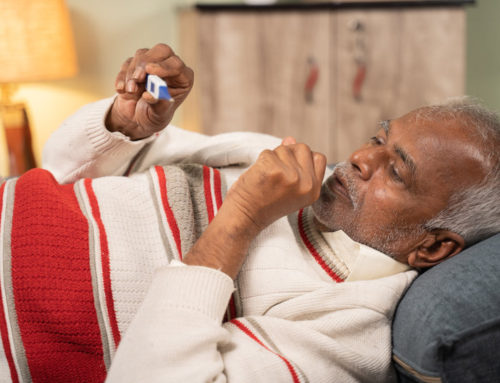Share This Story!
How Does Diabetes Affect The Older Population?
Diabetes is a disease that hinders the body’s ability to produce insulin. Without insulin, the body struggles to convert sugar into energy. According to reports, approximately one-third of US adults over the age of 65 have diabetes. Even more troubling is the fact that half of these patients are undiagnosed. Diabetes presents some unique challenges for older patients. Due to other pre-existing health and living conditions, diabetes can be challenging for older patients to manage.
What issues do older diabetic patients face?
Patients age 65 or older face various issues regarding diabetes management. The patient’s level of independence is a significant factor. Patients that live in a nursing home or assisted living facility may need the nurses to monitor blood sugar and dispense medications or insulin. Independent patients have less supervision and need to have a system to remember and perform these activities. Older diabetic patients are more susceptible to severe complications like amputations, stroke, renal disease, or visual impairments. Older patients are at higher risk of developing these issues due to microvascular and macrovascular diseases. These diseases damage the body’s blood vessels. The likelihood of these complications increases for patients over the age of 75.
What can older patients do to manage hypertension?
One of the most important things older patients can do to manage diabetes is to check blood pressure regularly. Most diabetics check blood sugar levels throughout the day, and the same can be done with blood pressure. At-home monitors are available for purchase that are easy to read and use. Patients should consider keeping a journal of blood pressure readings to share with a physician. Patients diagnosed with hypertension should work with a physician to lower blood pressure levels. Doctors may suggest lifestyle changes like a different diet or adding exercise to the daily routine. Doctors can also prescribe medication to keep blood pressure levels low.
Dealing with neuropathy
Many people with diabetes deal with nerve damage called neuropathy that produces a painful tingling or numb sensation in the body. Neuropathy can lead to urinary tract issues, digestive system complications, ulcers, and heart problems. Patients that do not adequately control blood sugar levels are at risk for developing the disease.
Patients should manage blood sugar levels and inspect the feet daily. Check for cuts, scrapes, and bruises and consult a physician if the cuts do not heal or become infected. Patients should also try to keep a healthy body mass index and quit smoking.
What else can I do?
Patients should speak to a healthcare provider to create a comprehensive plan to manage diabetes. Doctors will thoroughly assess the patient’s condition and offer tips to nurses or family members that provide care for the patient. For more information, speak with a healthcare provider.





